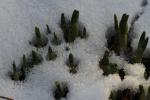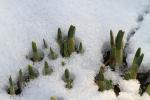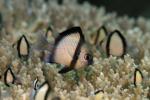Spring Buds
ktuli — Tue, 03/08/2011 - 20:28
Yeah - I am still struggling with that lack of motivation, so I'm going to take a little break from the Wakatobi photos for a little bit. I have been looking around at various photography challenge websites as a way to get some inspiration. I found one that was running with the theme of Spring (though I can't seem to find it again), so I grabbed the camera after I got home yesterday and headed out.
I went out with a specific shot in mind, and managed to actually come back with it...
 |
|
 Camera Metered 1/130 sec at f/8 |
 Manually "Over-Exposed" 1/40 sec at f/8 |
Technical Data: Canon EOS 7D, Canon EF 100mm f/2.8L Macro IS USM, 1/130th and 1/40th sec at f/8. Image Stabilization on. ISO 200 (Auto). No post production.
What is being illustrated here is the tendency for cameras to be "confused" by large amounts of bright or dark areas. This frequently happens in snowy scenes or bright sandy beaches being underexposed if you trust the camera's built in meter (ie: if you use auto mode, or even aperture or shutter priority, or even if you use the suggested exposure while in manual mode). In the case of snow, you end up with grey snow.
To fix this, you need to manually "over" expose the image. So yesterday, when I shot these buds bursting up through the snow, the camera's meter exposed the image a little dark and you can clearly see how the white snow appears grey. If you're using manual mode simply nudged the exposure time up a bit, or use your camera's exposure compensation feature, and the result is bright white snow.
I know... if you're like me, you're sick of seeing snow, but I didn't have any bright white tropical beach sand to illustrate this on, so hopefully this little sign of impending spring is enough.
Hopefully it also works to help get me motivated again. and I can get back to more regular posts.
- Bill
PS: Oh - I almost forgot, a similar phenomenon happens in a very dark scene with lots of black. The camera's meter will result in an exposure where the black begins to turn grey. The solution there is simply to "underexpose" a little, and you're all set.




Post new comment